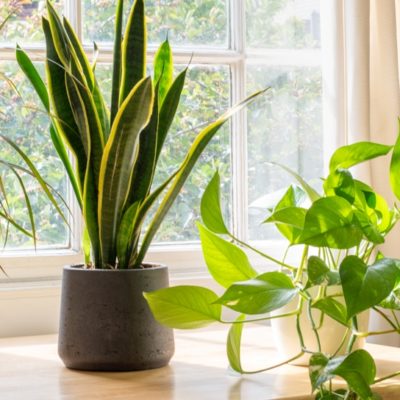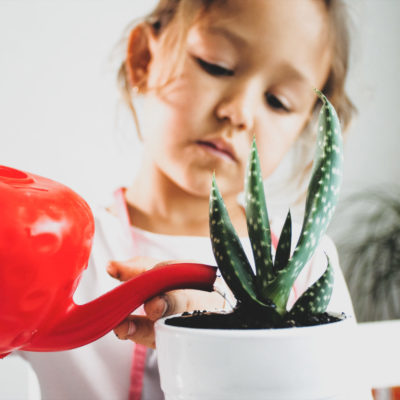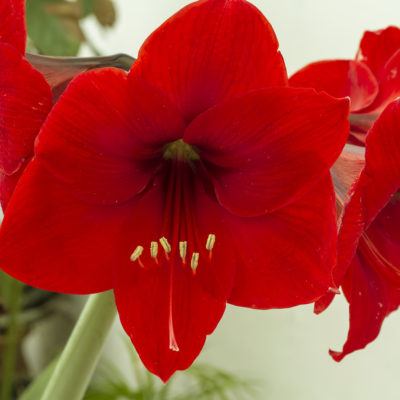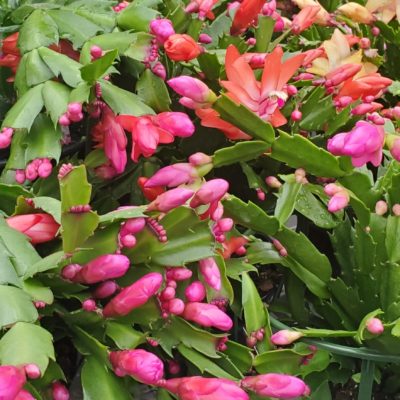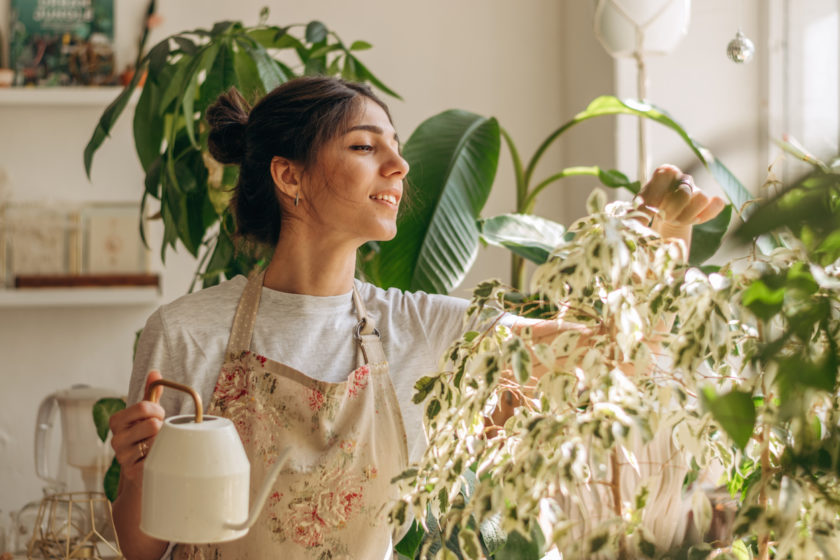
Tips for Caring for Your Tropical Houseplants
All plants thrive in ideal environments but can also adapt, to a point, when necessary. Basic essentials like sunlight, water, temperature, soil, nutrients, and humidity need be kept in balance to keep your plants happy and healthy. Check individual plant tags for detailed information about the best conditions for each of your tropical houseplants.
Light
Low Light: Indirect light
North or Northeast facing windows, room interior, window with closed sheers.
Medium Light: Bright location with indirect light
East window (morning sun), West window (evening sun), or placed away from a South window.
Direct Light: Bright, sunny direct light
In a South or West window; 4+ hours of sun daily; hot and intense in summer.
- Rotate your plants regularly to ensure even growth.
- Direct light plants will require as much sunlight as possible in fall and winter, and typically do not thrive in lower light locations.
- Plants in low light locations will require less frequent watering, and may drop their leaves in response to the lower energy levels (this also applies to all tropical houseplants during low light days of fall and winter.
Watering
*Never use machine-softened water to water plants.
Salt will accumulate at the roots and will slowly kill your plants.*
Evenly Moist: Keep soil moist. Never let dry out completely, but do not let sit in water.
Water Well: Allow soil to dry slightly then water well until water runs out the drainage hole(s).
Dry Well: Allow soil to become very light and separate from the pot.
You will have to water several times to allow soil to fully absorb the moisture.
Incorrect watering practices are the #1 reason for most plant problems.
- Always drain excess water away to reduce the risk of root rot.
- Water from the top of the pot until water flows out of the drainage holes.
- Plants will need less frequent watering in fall and winter due to the shorter days.
Misting & Humidity
- Use a spray bottle daily for Tropical varieties that prefer higher humidity, preferably in the morning to ensure leaves are dry overnight.
- “Pebble trays” are great for smaller pots: fill a saucer with small pebbles or stones, then place the pot on top making sure it’s stable. Fill saucer with water but do not allow liquid to reach the pot. The humidity level around your plant will slowly increase as the water evaporates. Small bowls of water placed around larger pots are also beneficial.
- Do not mist fuzzy leaves like African Violets, or arid-loving varieties like Cacti and Succulents.
Fertilizer
- We recommend fertilizing every 4th watering, or about once a month for many Tropicals.
- Use all-purpose fertilizer for foliage plants, and flowering fertilizer to help promote blooms for your flowering Tropicals (many varieties will not flower during low light of fall and winter).
- Cacti and Succulents only need to be fertilized twice a year: once in spring, once in summer. Use a Cactus & Succulent fertilizer or an all-purpose fertilizer diluted to half-strength.
Pruning
- Regular cleaning and removal of yellow/brown leaves on all plants is very beneficial.
- Some Tropical houseplants require occasional pruning to maintain a full, shapely appearance.
- Others, like most varieties of Dracaena, can be cut back if they get too tall.
- Pruning is best done in spring and late fall, when the plants are not in their blooming or dormancy seasons.
- New branches will typically grow from wherever the stem is cut, and some varieties will take longer than others to grow.
Repotting
- Most tropical houseplants prefer to be root bound, and do not need to be repotted until there is more root than soil in their pot (they may be “popping” out of the pot, or the soil dries out much faster than usual).
- Always choose a pot that has drainage holes! Your tropical houseplant cannot be left to sit in water, and drainage holes are the best way to remove excess moisture.
- Use a saucer or a slightly larger pot cover (which does not have any drainage holes) to hold excess water away from pot, and to avoid water damage to floors or shelves.
- To Repot Most Tropical Houseplants:
- Only use good quality indoor potting soil – for Cacti, Succulents, and Bonsai use Cactus potting soil that has added sand for increased drainage.
- Go up by one pot size at a time: a 4” pot to a 5” pot, or a 10” pot to a 12” pot. Too big of a pot will result in uneven moisture levels, which can lead to root rot.
- Lay your tropical down on some newspaper and gently ease it out of its existing pot – this is a great time to check for any root damage or issues.
- Add some soil to the bottom of the new pot, and gently place your tropical on top. You may need to add or remove soil to reach the correct level – remember to leave room for watering!
- Once you’re happy with your soil level, add more around the sides and pack it into any crevices. Lightly tap the sides and bottom to reduce air pockets, adding soil if needed. Ensure soil level is consistent, not higher or lower on the plant’s crown.
Stress
- When Tropical houseplants are under stress they can drop leaves, discolour, and become susceptible to insects and diseases.
- Most Tropicals will go through a period of stress when they are brought from the greenhouse to your home; they will need time to acclimatize to their new environment, typically a few weeks or months depending on the variety and season.
- Reasons for plant stress can be one or a combination of the following:
- Moving to a new location
- Being repotted
- Watering too often (kept too wet)
- Watering to little; not enough to completely moisten soil (kept too dry)
- Too much time between waterings
- Sitting in water
- Too much light
- Not enough light
- Temperature fluctuations (hot or cold drafts, too close to cold windows or doors, etc.)
- Too humid
- Not humid enough
- Tip: If you need to use insecticides or fungicides, avoid spraying in direct sunlight to reduce risk of leaf burn; try to schedule for a cloudy day.
Sometimes plants do well in environments that are “not recommended.” If your plant is happy where it is, you’re doing something right so just let it be! However, if you are having concerns or problems with your plant, take a look at the list above and see if any changes need to be made.
Remember:
Nothing lives forever, and all plants have a lifespan.
Even if you’re doing everything right, sometimes it’s not enough – and that’s okay.

